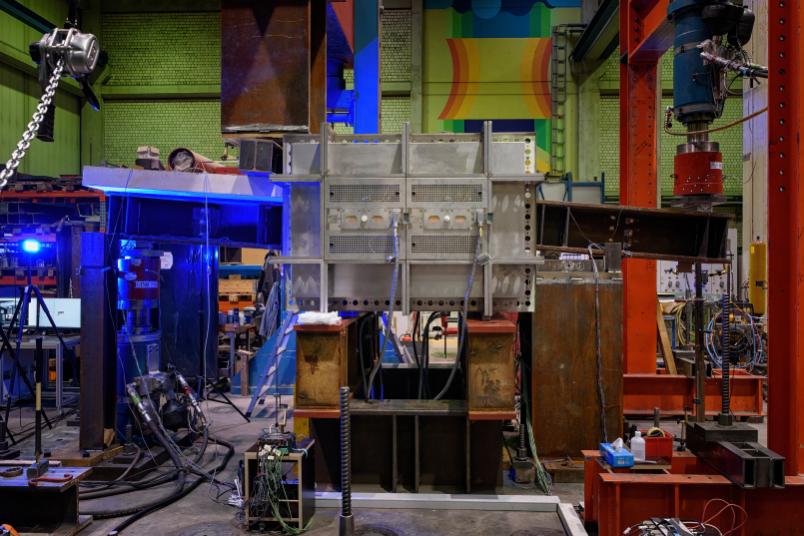
Composite construction
Bridge girders in the oven
When concrete and steel stick together, they may be able to withstand extreme heat far longer than each of them can on its own. This is relevant when planning for fire protection in building construction.
When fire breaks out under a bridge, as happened in September 2020 on the A40 autobahn in Mülheim, the whole structure is at great risk: the heat can rapidly rise to several hundred degrees Celsius. Steel girders can’t withstand it for long; the structural components fail: after a truck that transported fuel caught fire in Mülheim, three railway bridges had to be demolished. But how long can bridges actually support such a load? How do they have to be designed so that no one comes to harm? This is what researchers from the Chair of Steel, Lightweight and Composite Construction at Ruhr University Bochum hope to find out in their project by heating bridge girders in a huge oven and observing the process. The results are to be incorporated into a standard. Rubin, the science magazine of Ruhr University Bochum, features an article on this project.
Concrete shares the load
The main question is to what extent the concrete contributes to the heat resistance of the building. “To date, technical analyses have mainly focused on steel girders,” points out PhD student Mehmed Numanovic. They are to the concrete deck at short intervals with shear studs. “Because of being so firmly connected, the steel girders don’t have to bear the full weight of the concrete deck; rather, it supports itself, as well,” explains Rebekka Winkler from the project team.
The project team has set up a huge test rig in a factory hall in order to determine which role the concrete slab plays in the process. At its centre is an electric modular oven that can be flexibly adapted and generates heat of up to 1,200 degrees Celsius. The test objects are placed through this oven: steel-concrete girder structures of different compositions, with a length of 7.2 metres and a height of one metre. “They are identical to the girders that are installed in real bridges and skyscrapers,” says Mehmed Numanovic.
Tool for engineers
The results of the experiments are to be incorporated into a numerical model with which the load-bearing capacity of such girder structures can be calculated. Engineers should then be able to use a tool based on this model to configure their structure in conformity with the standards. “It’s conceivable that the steel girders used to date are actually oversized, because they’ve always been designed without taking the effect of the concrete deck into account,” says Mehmed Numanovic. The tests will show whether this is true and whether it will be possible to streamline the planning of steel structures for bridges and high-rise buildings without running any safety risks.